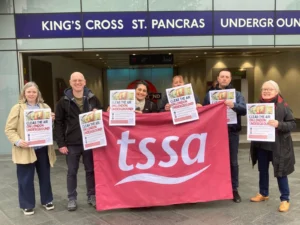Earlier this year, Oxford City Council became the first local authority to set a city-wide air pollution target, in light of this Air Quality News spoke to Cllr Tom Hayes, deputy leader of Oxford City Council and green transport and zero-carbon Cabinet Member to find out more.
Under their new Air Quality Action Plan, Oxford City Council has pledged to keep nitrogen dioxide (NO2) emissions to 30 µg/m3.
The current legal limit for NO2 is 40 µg/m3, however, research has now shown that this is not a ‘safe limit,’ with exposure to NO2 linked to a decrease in lung function, an increase in respiratory symptoms, cancer and adverse birth outcomes.
‘As a council, we have been campaigning for a number of years to get the government to toughen up NO2 standards,’ Cllr Hayes told Air Quality News.
‘But with little luck, earlier this year we decided to just go ahead and do this ourselves.
‘We set up the Oxford Charter for Cleaner Air, which a number of councils are now a part of and together we are using this to call on the government to introduce tighter air quality standards.
‘We are very aware that air pollution in Oxford has seen significant reductions in recent years, but we have recently realised that the success we were having was starting to plateau. In order to achieve the next step-change, we realised that we needed to have a new target as a way of driving our ambition forward.’
In Oxford, transportation is the biggest culprit of poor air quality, accounting for about 75% of all NO2 emissions, so according to Cllr Hayes, reducing the number of private vehicle trips is key.
‘What we need to be doing is reducing the number of unnecessary private vehicle trips, particularly single rider trips. We are proposing to do this through a policy called Connecting Oxford.
‘This involves introducing five traffic filters, five bus gates and the introduction of a workplace parking levy in the East of the city, we then plan to use the proceeds of the levy to fund a new bus route, which can then help to displace the need for so much private vehicle use.
‘We hope that once we reduce the congestion in the city that it will create space for cyclists, and so we will get a situation like we’ve seen during the pandemic where because there are fewer vehicles on the roads, people feel comfortable hopping onto a bike for the first time in ages or ever.’
As part of their efforts to reduce private vehicle use, Oxford City Council recently found out that they have been shortlisted to become one of the UK’s first all-electric bus cities.
According to Cllr Hayes not only will this ensure that there is a reduction in air pollution, but it will also help to improve the bus service that this city can offer.
‘We know that by reducing the number of private vehicles on our roads it can speed up the buses, meaning that they’re more reliable.
‘What this means is that then the bus companies need to run fewer buses and are able to meet their timetables. We’re hoping that this can be achieved by 2027 but the knock-on benefits will be huge.’
On top of this, Oxfordshire County and City Council are also currently in the consultation phase of a new Zero Emission Zone (ZEZ), the pilot of which will begin in August 2021.
Cllr Heyes revealed that the response from the consultation was overwhelmingly positive, ‘we are really amazed by the overwhelming support for the zone,’ he said.
‘A survey from our resident’s pane last month also showed that the public are in favour of reducing car use in the city centre.
‘We asked the public, “to what extent do you agree or disagree that Oxford must take preventative measures to protect citizens from air pollution, even if it means, preventing polluting cars from entering and entering the city,” 78% of respondents said they strongly agree.
‘And then we also asked “to what extent do you agree or disagree that Oxford must take effective measures to protect citizens from air pollution, even if this requires reallocated public space to walking, cycling and better transport” again 70% said they strongly agreed.’
Oxford is clearly making strides when it comes to reducing air pollution and as Cllr Hayes has explained they many ambitious plans in the pipeline, but with nitrogen dioxide (NO2) pollution on the increase in Oxford, they still clearly have a long way to go.
Photo Credit – Pixabay

















Leave a Reply